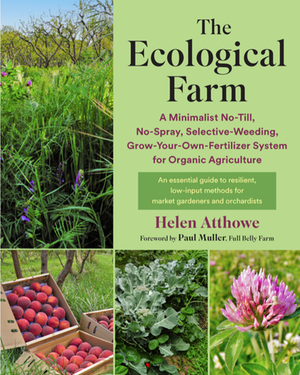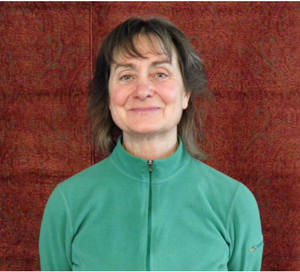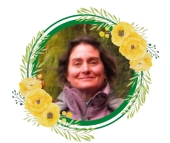
 7
7






 5
5




Explore the Permies Digital Market - ebooks, movies, building plans, courses, and more. Oh my!



 6
6




How Permies works: https://permies.com/wiki/34193/permies-works-links-threads
My projects on Skye: The tree field, Growing and landracing, perennial polycultures, "Don't dream it - be it! "
 4
4




 5
5




Invasive plants are Earth's way of insisting we notice her medicines. Stephen Herrod Buhner
Everyone learns what works by learning what doesn't work. Stephen Herrod Buhner
 9
9




 6
6




Garden Master Program video course and ebook guide
 3
3




"The only thing...more expensive than education is ignorance."~Ben Franklin. "We can easily forgive a child who is afraid of the dark; the real tragedy of life is when men are afraid of the light." ~ Plato
 7
7




Finally! An Online Garden Master Course for permies!
How Permies.com Works


 2
2




 3
3




Garden Master Program video course and ebook guide
 6
6




 5
5




Sourdough Without Fail Natural Small Batch Cheesemaking A Year in an Off-Grid Kitchen Backyard Dairy Goats My website @NourishingPermaculture @KateDownham






 5
5




The more I know, the less I need - Misquoted from Yvon Chouinard
 1
1




gardener, homesteader
 2
2




 3
3




 1
1




 5
5




 1
1




 2
2




 2
2




 I watched one of your presentations available on YT that detailed a minimal till method of annual farming- the presentation was amazing, in part because of your scientific approach, but also because of your conversational style. Being able to hear your story and thought process in combination with the numbers behind your results was incredibly helpful (I’m thinking of your soil testing- nitrogen addiction recovery😂- and crop yields). I just saw that you posted a new YouTube video in June, so I will be watching that! Does this book describe your transition from minimal tillage to no-till? I’d love to hear/read your experience with that. Thanks again
I watched one of your presentations available on YT that detailed a minimal till method of annual farming- the presentation was amazing, in part because of your scientific approach, but also because of your conversational style. Being able to hear your story and thought process in combination with the numbers behind your results was incredibly helpful (I’m thinking of your soil testing- nitrogen addiction recovery😂- and crop yields). I just saw that you posted a new YouTube video in June, so I will be watching that! Does this book describe your transition from minimal tillage to no-till? I’d love to hear/read your experience with that. Thanks again 3
3




 3
3




Making my world a better place, one permaculture decision at a time.
 4
4




 2
2




There is madness to my method.
"Life finds a way"- Ian Malcolm
"We're all mad here" - The Cheshire Cat
 3
3




 2
2




 2
2




 2
2




 2
2




“Few people today muck around in earth, and when on international flights, I often find I have the only decently dirty fingernails.” ---Bill Mollison
 3
3




 5
5




 5
5




 4
4




 4
4




 3
3




All true wealth is biological.
Lois McMaster Bujold




helen atthowe wrote: I would test your soil and choose a cover crop mix based on your soil nutrient and texture needs. ...It is worth doing the homework to know your soil and site very well before you choose cover crops, living mulches, and soil amendments. Good luck building your soil organic matter and microbial community.
 3
3




helen atthowe wrote:Hi Jon, Very funny! Paul was a student of mine 20 years ago, but never an influence! But I have had a lot of important influences. My greatest influences were: Wes Jackson from the Land Institute, where I did a year long internship 40 years ago and learned about plant ecology and perennial polycultures. Fukuoka, who taught me to keep the soil covered always. My brilliant late-husband, Carl Rosato, who inspired and helped me to experiment with no-till methods. Eric Brennan, USDA Research Horticulturist, who has done some great organic systems and cover crop research. Michael Phillips, author of the Holistic Orchard. Several university soil scientists whose soil microbial ecology research helped me see the soil in a whole new way. Good question! Our influences shape the way we think and help us to see the world differently.
helen atthowe wrote:Jon, I don't add or use mycelium in my gardens, except to add organic residues as mulch that are filled with fungal mycelium as they break down. So far, I have been able to create habitat for fungi and they come naturally. Bacteria and parasitic nematodes also suppress pest nematodes and like organic residues additions and moist soil. Good luck!
“Few people today muck around in earth, and when on international flights, I often find I have the only decently dirty fingernails.” ---Bill Mollison
 5
5





|
What are you doing in my house? Get 'em tiny ad!
The new permaculture playing cards kickstarter is now live!
https://www.kickstarter.com/projects/paulwheaton/garden-cards
|



